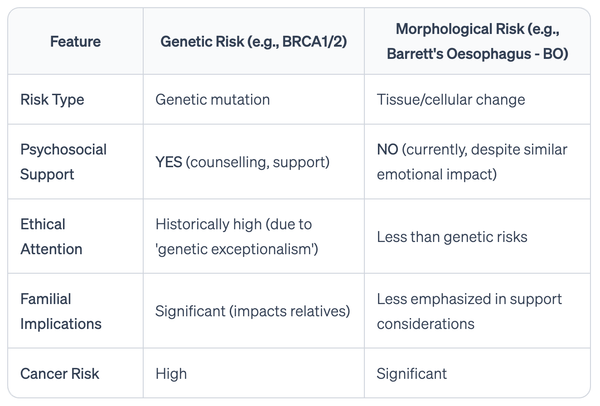Neoplastic progression in young Barrett's patients

Esophageal adenocarcinoma is quite rare among persons younger than 40 years, but the consequences of the disease, including years of life lost, can be devastating. Due to its rarity there has been little research on how risk factors in young persons (e.g., Barrett's esophagus (BE), obesity, GERD, smoking) might differ from those established for older populations. This study represents the first population-based analysis examining the incidence rates of progression to dysplasia and adenocarcinoma in patients with early onset BE. Conducted in the Netherlands, the research spanned from 1991 to 2015 and involved 231 patients diagnosed with early onset BE. During the surveillance period, which collectively amounted to 1522 person-years, 7.4% of these patients developed dysplasia, while 1.3% progressed to adenocarcinoma. These progression rates are quite similar to those in older persons. The retrospective nature of the study, however, presented certain limitations, including missing endoscopy reports and a lack of detailed clinical data, which could affect the conclusions. The results emphasize the importance of heightened awareness and diligent surveillance in young patients with BE due to their increased risk of progression to cancer.
Exploring the incidence of dysplasia or adenocarcinoma in early onset Barrett's esophagus.
Endoscopy. 2024 Sep 23. doi: 10.1055/a-2386-7843. Epub ahead of print. PMID: 39313196.
Noordzij IC, Huysentruyt CJ, Curvers WL, van Lijnschoten G, Masclee AAM, Schoon EJ.
Abstract
Background: Currently data on the risk of progression to and lifetime risk of cancer are not available for patients with young onset Barrett's esophagus (BE). Our aim was to obtain epidemiologic data on the incidence of dysplasia or adenocarcinoma in young onset BE in the Netherlands by collecting data on all histologically confirmed cases over a prolonged period of 25 years between January 1, 1991 and December 31, 2015.
Methods: Data were obtained from the Dutch National Pathology Registry. Patients were included if there was a suspicion of BE visualized in the esophagus during the endoscopic examination in combination with a concordant histologic diagnosis of intestinal metaplasia.
Results: 231 patients with early onset BE were identified (median age 26 years [range 0-29 years]), with 17 progressing to dysplasia (6 prevalent and 11 incident). For the patients with incident dysplasia, the median surveillance time between the diagnosis of early onset BE and diagnosis of dysplasia was 5 years (range 0-16 years). The incidence rate of dysplasia was 7.3 per 1000 person-years. There were three patients who developed adenocarcinoma (1 prevalent and 2 incident), who were diagnosed at ages 28, 35, and 36 years. The incidence rate of adenocarcinoma was 1.3 per 1000 person-years.
Conclusions: In this 25-year period, 231 patients were diagnosed with early onset BE in the Netherlands, with 17 patients progressing to dysplasia and three developing adenocarcinoma. This corresponded to incidence rates of 7.3 per 1000 person-years for dysplasia and 1.3 per 1000 person-years for adenocarcinoma.
The Author(s). This is an open access article published by Thieme under the terms of the Creative Commons Attribution License, permitting unrestricted use, distribution, and reproduction so long as the original work is properly cited. (https://creativecommons.org/licenses/by/4.0/).




